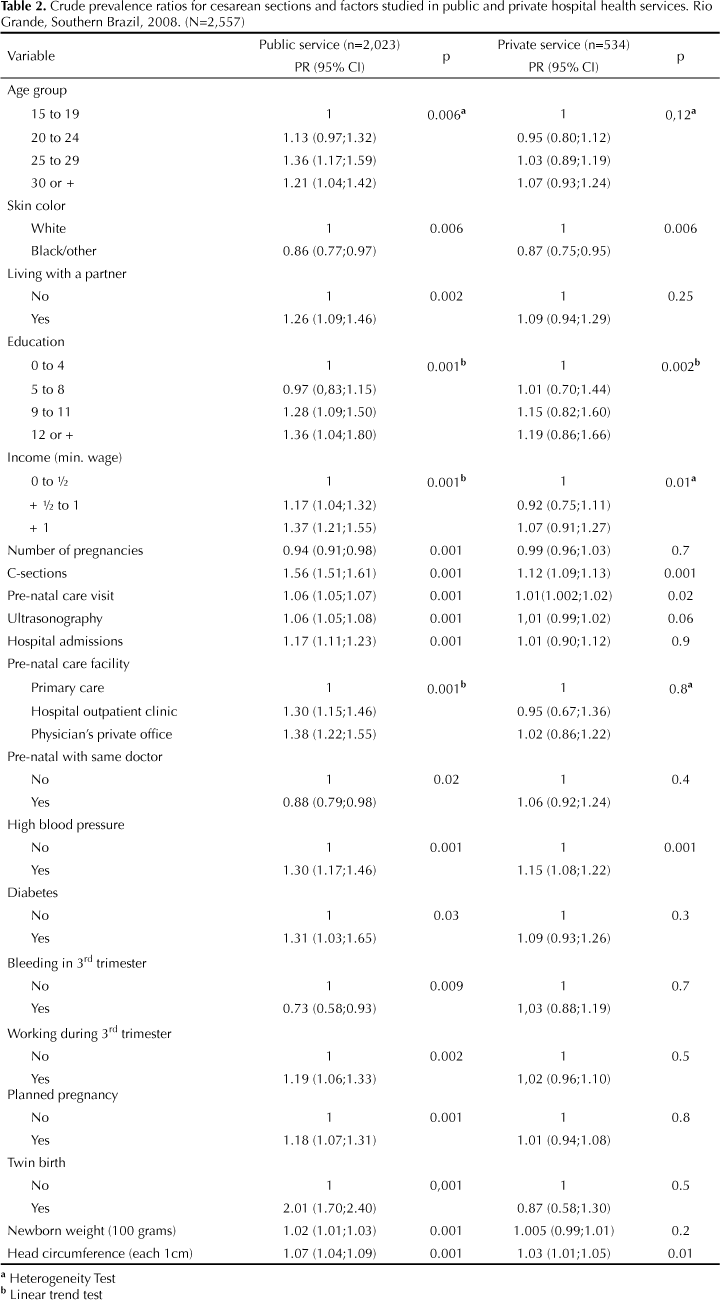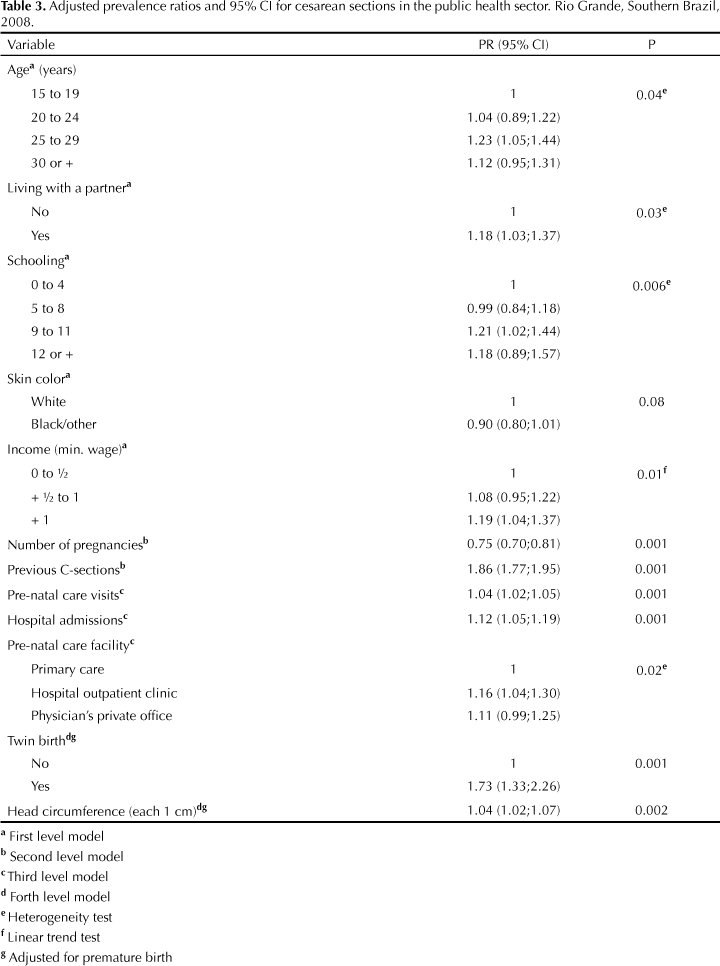OBJECTIVE: To analyze the rate of cesarean section and differences in risk factors by category of health service, either public or private. METHODS: A cross-sectional study was carried out including all pregnant women in labor admitted to hospitals in the city of Rio Grande, Southern Brazil, between January 1 and December 31, 2007. A pre-coded and pre-tested questionnaire was used to collect on social, demographic, obstetric and newborn care information. Two regression models were constructed: one for public users and the other one for private ones. Poisson regression was used in each model in the multivariate analysis. Prevalence rates and 95% confidence intervals were calculated for each adjusted factor. RESULTS: The rate of cesarean section was 43% and 86% among public and private users. Sociodemographic factors and twin births have a more significant impact among public users as well as number of pregnancies (25% vs. 13% reduction in public and private users, respectively) and previous cesarean section (86% vs. 24% increase in public and private users, respectively). Prenatal care visits and hospital admissions affected the outcome only in women users of public services. CONCLUSIONS: Cesarean section rates were high in both groups studied, but it was twice as high among women cared in the private sector. Associated factors differ in magnitude by category of service used.
Cesarean Section; Risk Factors; Socioeconomic Factors; Health Maintenance Organizations; Supplemental Health; Single Health System; Cross-Sectional Studies




